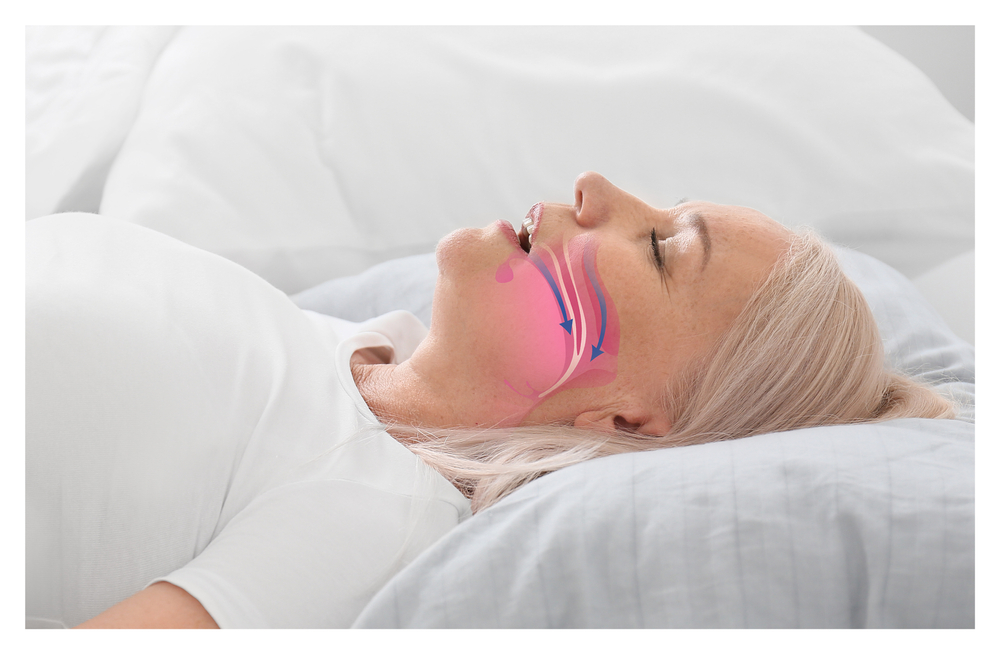Find Relief For Your Sleep Disorders
Upper Airway Resistance Syndrome (UARS) may not be as widely recognized as other sleep disorders, but its impact on everyday life can be profound. Patients with UARS suffer from partial airway obstructions during sleep, leading to symptoms like chronic fatigue and frequent awakenings.
While it shares some similarities with obstructive sleep apnea (OSA), UARS presents distinct challenges in diagnosis and treatment. Whether you’re personally affected by UARS or seeking information for a loved one, we’re here to provide thorough information and actionable steps for managing this sleep disorder.
What Is Upper Airway Resistance Syndrome?
Upper Airway Resistance Syndrome (UARS) is a sleep disorder defined by the relaxation of soft throat tissue, which hinders the normal flow of air during sleep. While similar to obstructive sleep apnea (OSA), UARS is considered by professionals to be less severe and occupies a middle ground between snoring and OSA in terms of its clinical impact.
Individuals with UARS often experience symptoms such as:
- Snoring
- Daytime sleepiness
- Disrupted or poor sleep quality
- Difficulty falling asleep
- Persistent fatigue
- Impaired memory or cognitive function.
One key distinction between UARS and OSA is the absence of significant pauses or reductions in breathing in UARS patients. If such episodes occur, they’re generally mild. In contrast, patients with sleep apnea often endure extended periods of disrupted breathing.
Another distinguishing factor is the weight of the affected person. People with UARS typically maintain an average body weight, whereas those with sleep apnea are often overweight or obese. Unfortunately, UARS has the potential to progress into full-blown sleep apnea if left untreated.
UARS manifests as a sleep disorder marked by partial airway obstruction due to relaxed throat tissue during sleep. Its symptoms are akin to sleep apnea but are generally less severe. Recognizing these differences and promptly addressing UARS can help prevent its progression into more serious sleep-related conditions.
What Causes Upper Airway Resistance Syndrome?
UARS primarily occurs due to specific anatomical and physiological factors within the throat and airways during sleep. Patients often have one or more of the following characteristics:
Collapsed Throat Tissue
UARS can be triggered when the soft, fatty tissue in the throat loses its tone and collapses inward during sleep. As a result, the tissue obstructs the airway and impedes the smooth flow of air.
Narrowed Airways
Narrowing of the airways, possibly due to a combination of anatomical factors, can contribute to UARS. The constriction limits the space through which air can pass, which leads to breathing difficulties.
Tongue Obstruction
UARS may also occur when the tongue falls to the back of the throat, obstructing the airway. This blockage further exacerbates the challenges of maintaining uninterrupted airflow during sleep.
Collectively, these issues result in labored breathing and an increased effort and resistance in the airway. The brain responds to this reduced airflow by rousing from deep sleep, causing disrupted sleep patterns observed in individuals with UARS. Patients and professionals must understand the underlying causes to diagnose and effectively manage this sleep disorder.
How Do Professionals Diagnose UARS?
When individuals present symptoms suggestive of UARS, doctors often recommend a polysomnogram, also known as a sleep study. This specialized test records various physiological parameters during sleep to assess the severity and nature of the sleep disorder.
During the polysomnogram, several sensors and devices collect data, including:
- Brain waves
- Blood oxygen levels
- Heart rate
- Breathing
- Eye and leg movements
By conducting a polysomnogram, sleep specialists gain valuable insights into the patient’s sleep physiology, helping them make an accurate diagnosis and develop an appropriate treatment plan.
Common Treatment Options for UARS
The treatment for Upper Airway Resistance Syndrome (UARS) is designed to alleviate the symptoms and improve the quality of sleep. The primary approaches include:
Positive Airway Pressure (PAP)
One of the main treatments for UARS involves positive airway pressure therapy, such as Continuous Positive Airway Pressure (CPAP). During CPAP therapy, patients wear a specialized mask connected to a machine that delivers a continuous stream of air into the upper airway.
The steady air pressure prevents the collapse of the soft throat tissues, maintaining an open airway and facilitating regular breathing.
Oral Appliances
Some individuals who find it challenging to wear a PAP device prefer oral devices, which prevent the collapse of soft throat tissues.
Surgery
In cases where UARS is particularly severe or resistant to other treatments, professionals may consider oral surgery. Surgical procedures aim to enlarge the airway, reducing the likelihood of collapse during sleep.
The specific surgical approach will depend on individual circumstances and should be discussed with a healthcare provider.
Looking for UARS Treatment Options?
If you’re seeking professional guidance on diagnosing and treating Upper Airway Resistance Syndrome (UARS), we invite you to consult with Sunrise Orthodontics and Airway and Sleep Group.
Don’t hesitate to contact us to schedule an appointment or gain deeper insights into managing this crucial aspect of sleep health.

